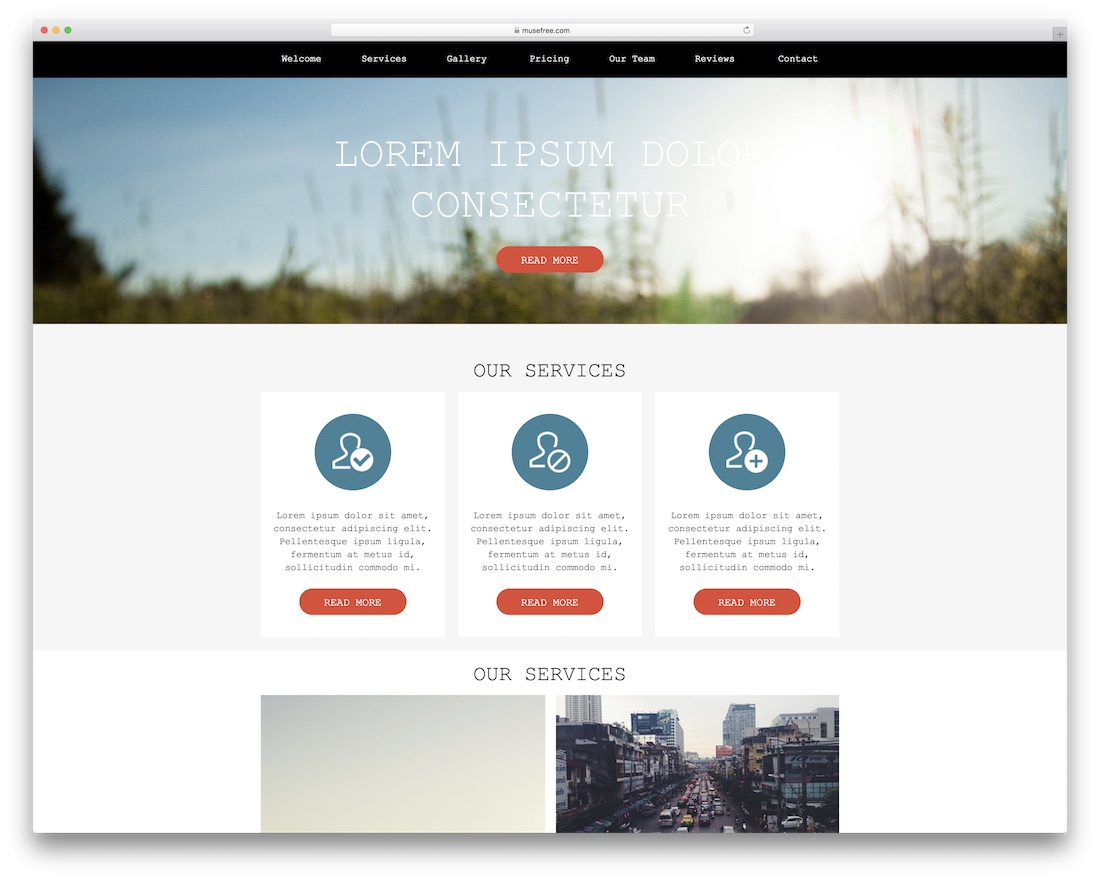

- Sample adobe muse websites full#
- Sample adobe muse websites code#
- Sample adobe muse websites professional#
Since Muse’s (code name) target audience won’t care, and anyone who does care will already know the issues just by playing around, it’s not even worth getting into here. If you are looking for a pedantic review of the HTML output, I suspect plenty of others will cover that. If anything, it might keep you from getting fewer calls from people who might not be good clients anyway. Muse (code name) is making no effort to replace you. If you are a web developer (or web development firm), your job is not at risk.Muse (code name) has the potential to be a great tool for the single graphic designer interested in showing off his or her work without having to learn a technology outside of his/her knowledge area (nor worry about accessibility, standards, alternate displays, SEO, etc.).In short, it comes down to these two key points: Should you ever have to change the core template you either have to go back to Muse (code name) and repeat the process, or you will have to skip Muse (code name) for all future revisions.
Sample adobe muse websites code#
Just building a single page to use as a template will require a great deal of work to reformat the code to fit into most content management systems that are out there. If you support a web content management system, then for all the reasons above Muse (code name) is not a good fit. This tool is not intended to support liquid designs, adaptive layouts, document re-flow, or really anything related to alternate viewing. If you find yourself leaning on CSS techniques as simple as printable styles or as complex as media queries to support alternate display sizes, you will be disappointed.
Sample adobe muse websites full#
While I did not find a menu option to do that, even if it exists it will require a full “publish” step every time you want to tweak your embed code. If you find yourself pasting HTML code from Google Maps or Twitter in order to embed third-party widgets on your site, you may find that is nigh impossible short of publishing your pages and then hacking through the HTML output. If you receive a background image to drop into an element, Muse (code name) will crop the image, even increasing its dimensions to fill the element, regardless of your plan to allow more of the image to be revealed should the container change in size. If you get a favicon, for example, from another member of your team, Muse (code name) cannot import it it only accepts PNG, GIF or JPG. If you are part of a web team, perhaps in an ad agency or interactive firm, then you will find that this tool doesn’t allow you to collaborate well. If part of your coding process involves making your HTML meet accessibility standards or even just structure your content for good SEO, you will find it impossible. Muse (code name) doesn’t allow you to edit the HTML, so you still need to “publish” your work before you can edit it. You will quickly see that the HTML is produces is not exactly structural or semantic, and that the piles of CSS and JavaScript aren’t exactly necessary.

If you are a coder, or someone who cares about the code, this tool isn’t for you. With its integration of jQuery effects and Lightbox widgets, it seems almost like this would be a tool for a photographer to build a gallery site. Just like Photoshop would produce massive image slices to support Photoshop “designers,” this product isn’t about the code. Right there is the gist of the product - enable print designers to convert their designs into web pages. Combine images and text with complete control, as flexibly and powerfully as you do in Adobe® InDesign®.
Sample adobe muse websites professional#
Now in beta, Muse makes it a snap to produce unique, professional websites.įocus on design rather than technology.

You can design and publish original HTML pages to the latest web standards without writing code. The target audience is pretty clear from the Muse (code name) web site introduction:Ĭreate websites as easily as you create layouts for print. Instead of getting into extensive detail about the quality of its code, its accessibility support, and so on, I figured I’d do a very quick review of how I think it affects web developers. Just like Adobe Edge (which refuses to launch), I had very little expectation that this would be a fully-developed sales-ready product. I downloaded and installed Adobe’s new web design tool, Muse (code name) (also at Adobe Labs) out of morbid curiosity. Updated November 24, 2021, originally posted AugOne Comment


 0 kommentar(er)
0 kommentar(er)
